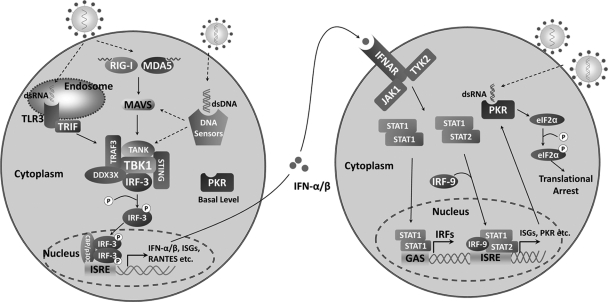Fig 1.
An outline of type I IFN responses. Upon virus infection, TLR3 on the endosomal membrane, RIG-I, MDA5, and DNA sensors in the cytoplasm are available to detect viral nucleic acids. These sensors transmit signals to TBK1 via multiple adaptor proteins; TBK1 subsequently phosphorylates transcription factor IRF-3/7, leading to production of IFN-α/β, RANTES, and ISGs. Secreted IFN-α/β acts in an autocrine or paracrine manner, where it induces the expression of a wide array of ISGs. Collectively, these gene products promote the establishment of an antiviral state. PKR, which is constitutively expressed in normal cells, is also upregulated by IFN-α/β. Once bound to viral dsRNA, PKR is activated to phosphorylate eIF2α and shuts off protein synthesis.

